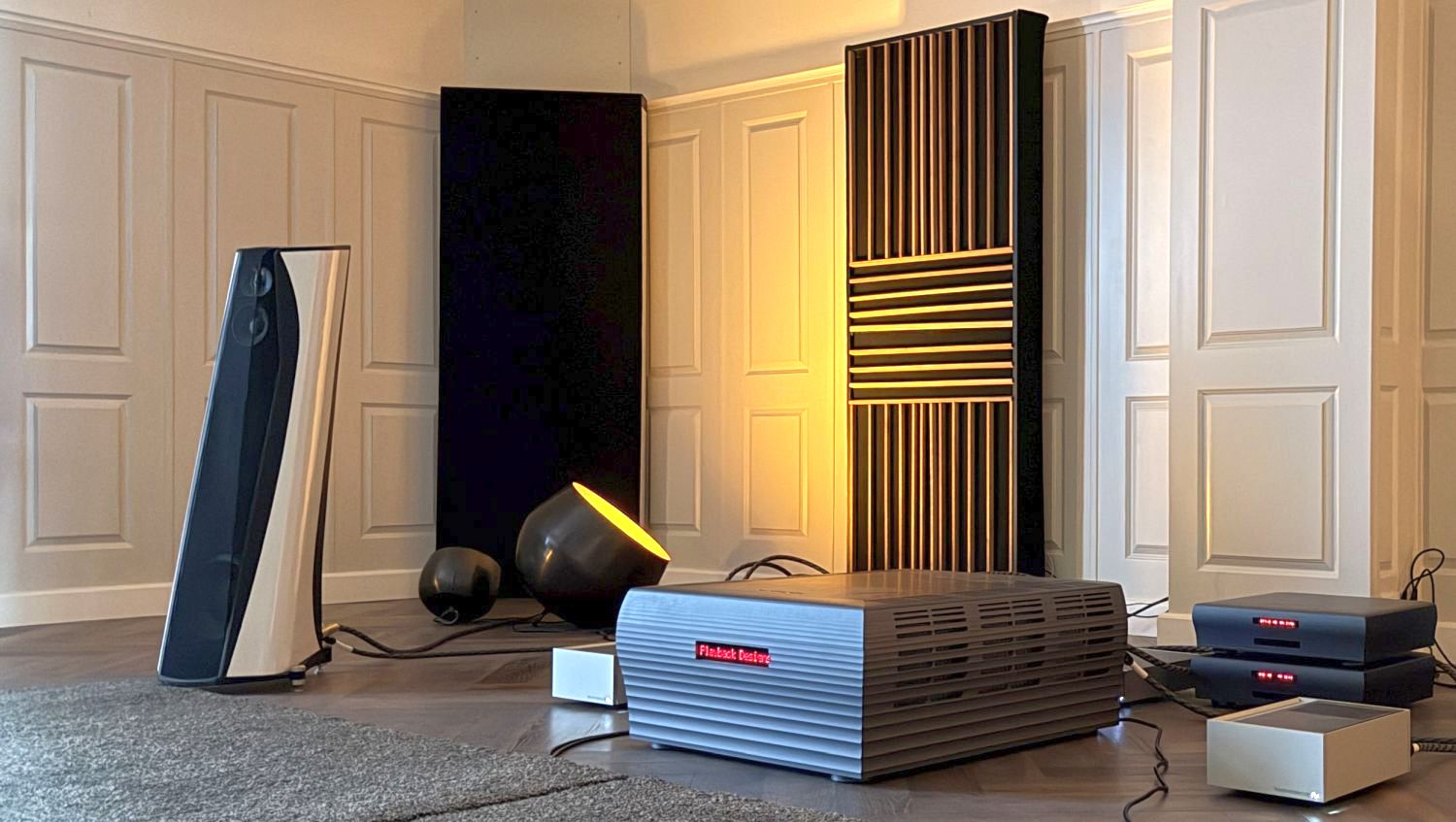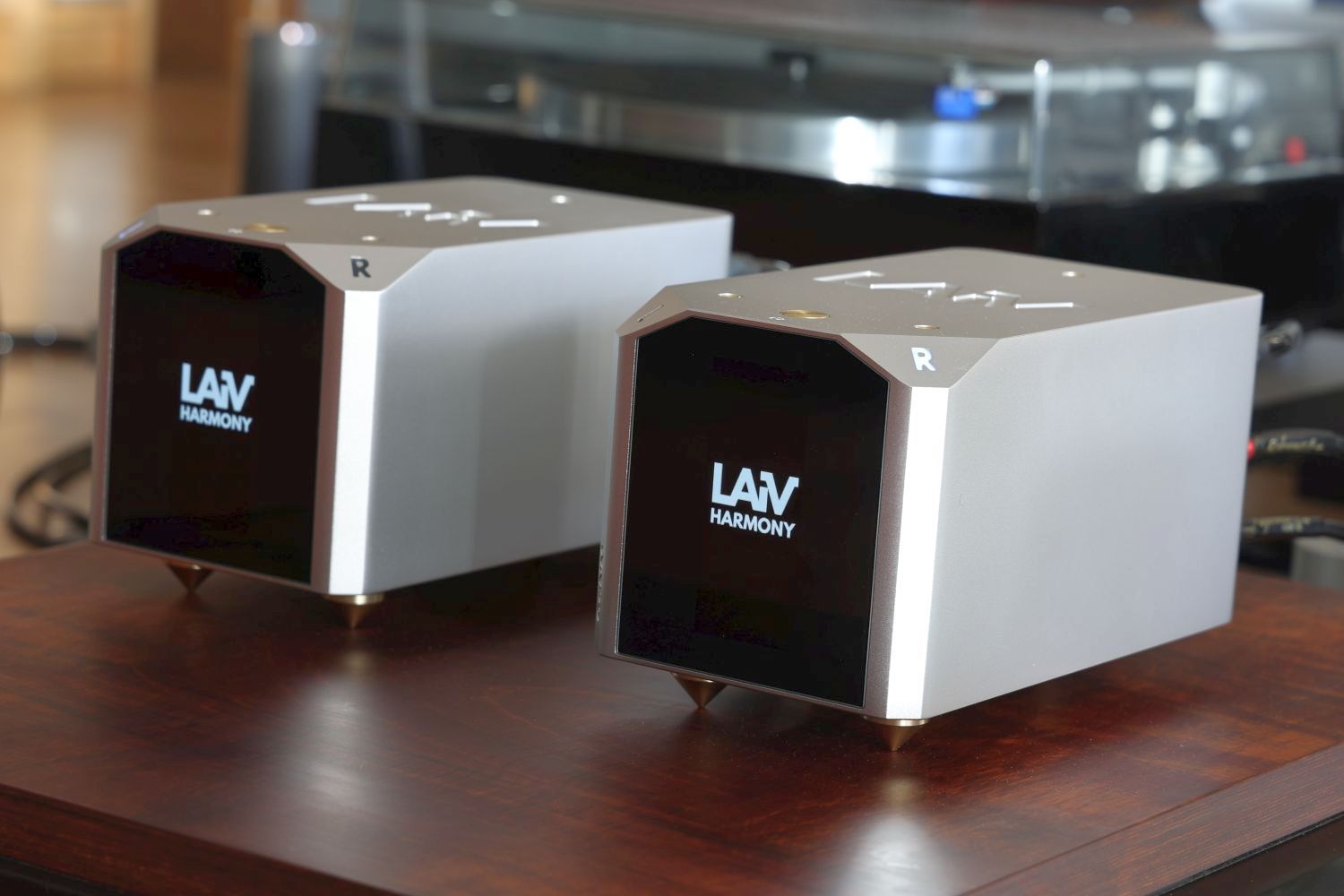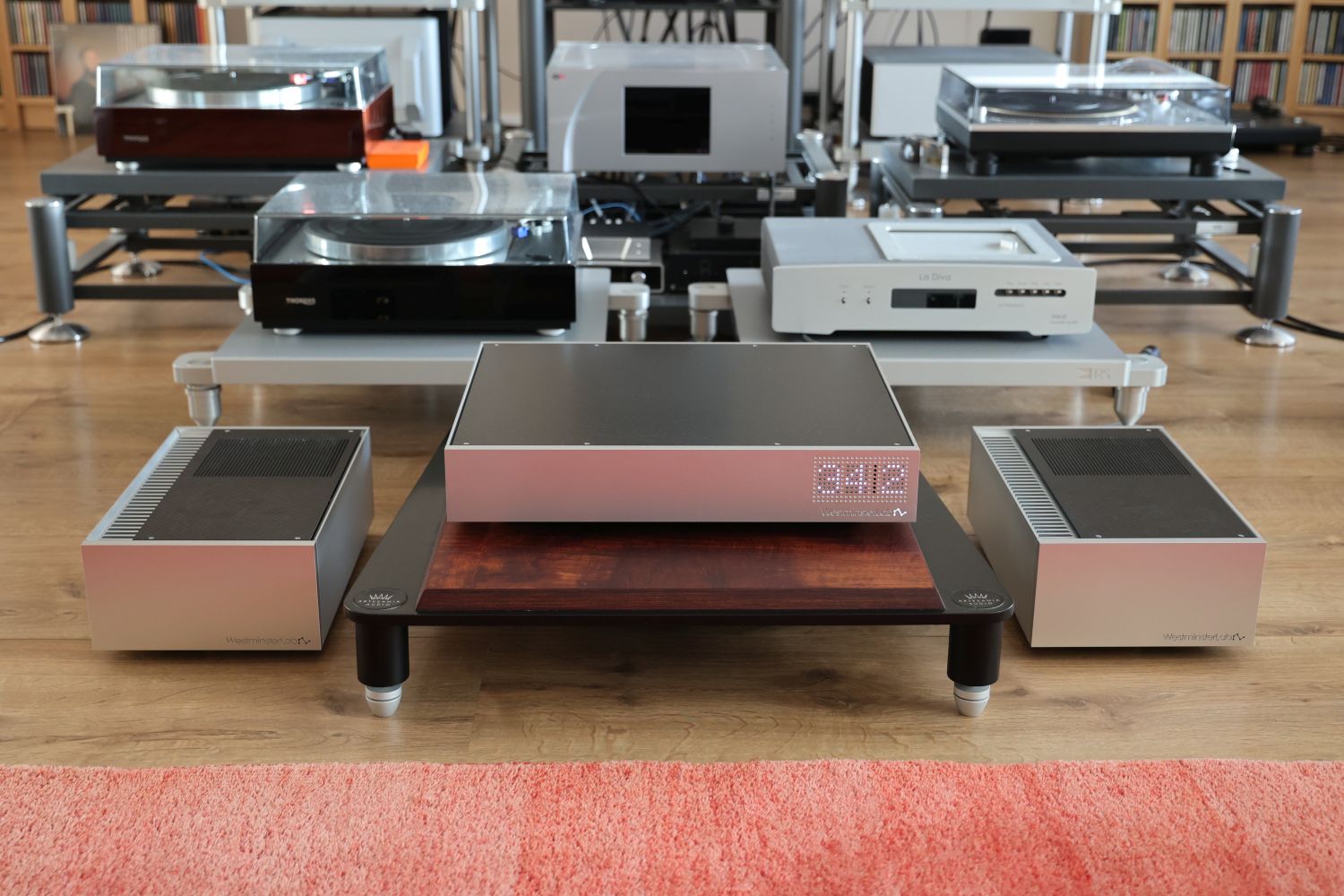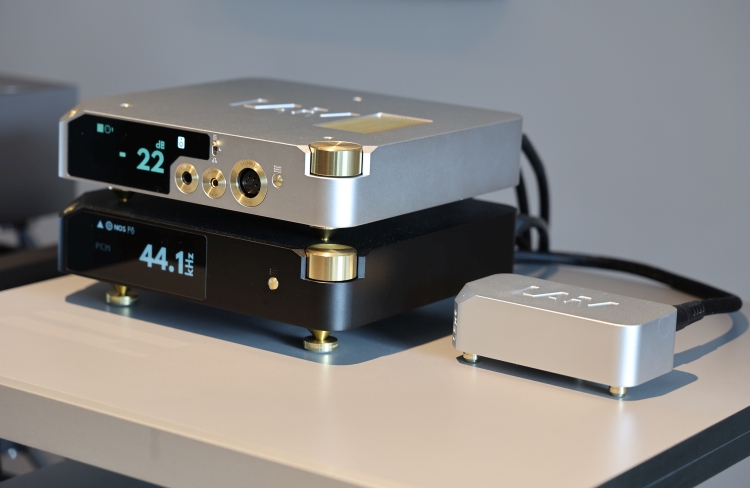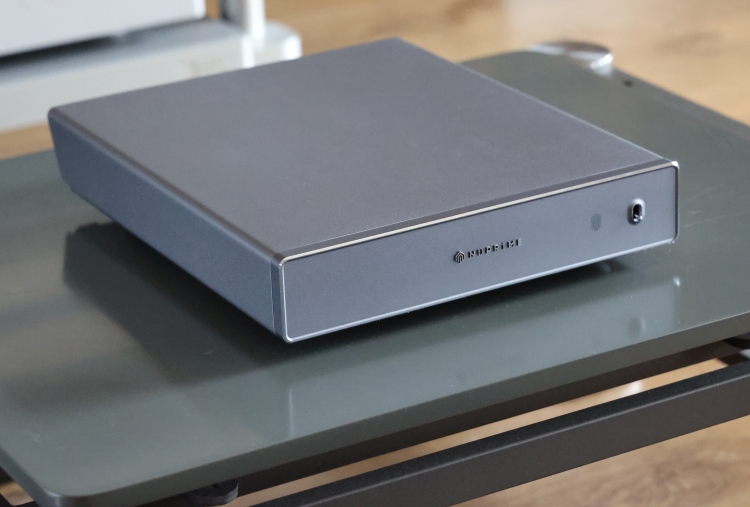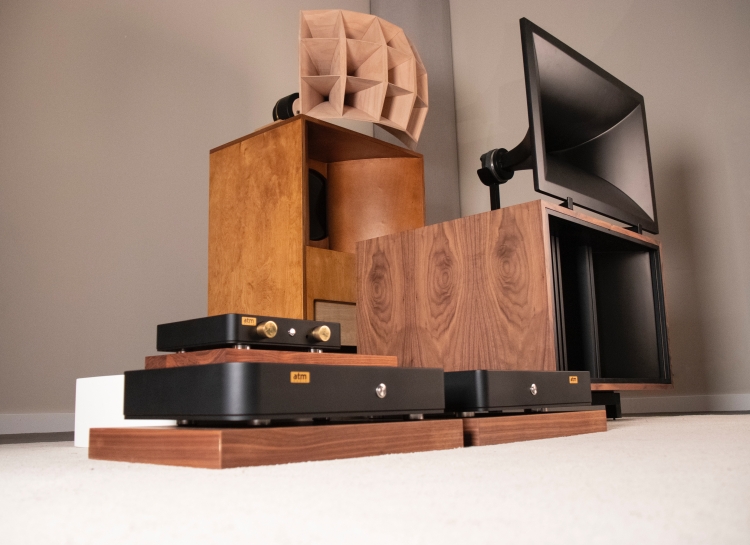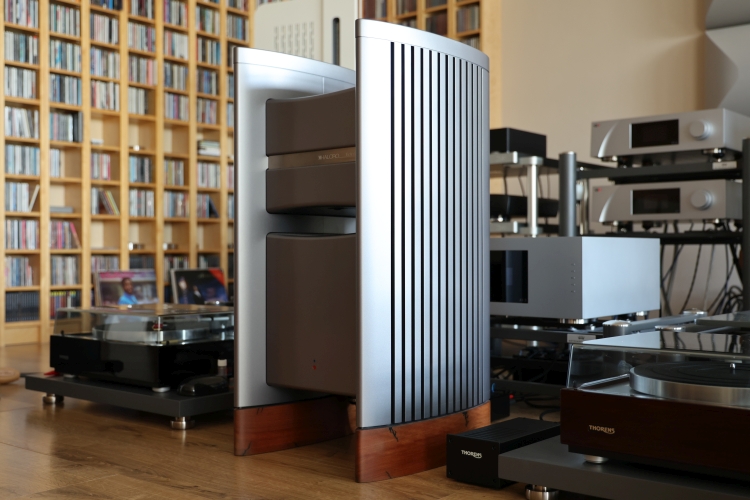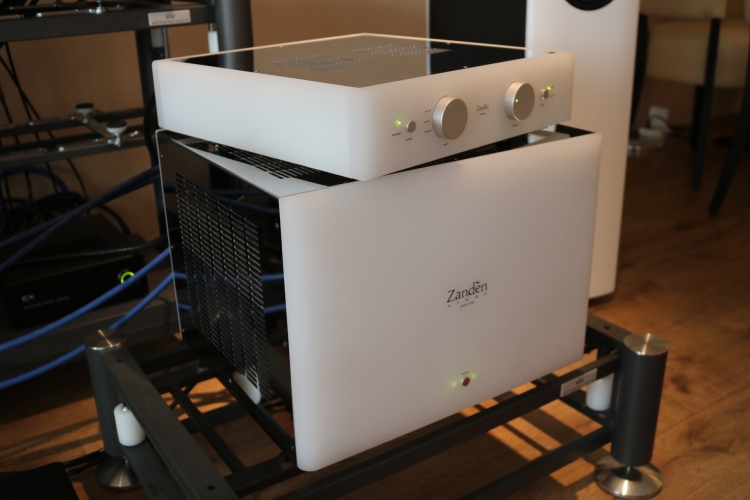
Perspective
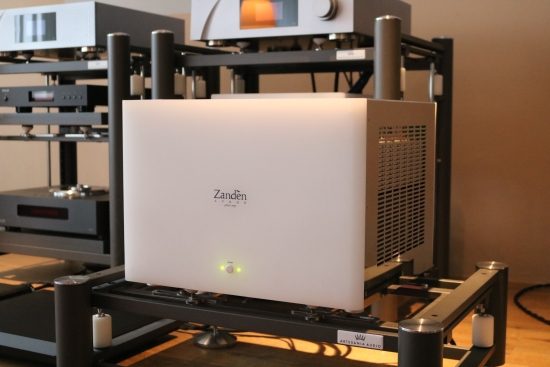
Equipment Support
The surface or contraption on which any component is placed can be of a big influence on its sound. For this review, so far, I put the Zanden 8120 on an Artesania Aire Floor Platform, allowing it the same treatment as for all the other components under review. While a rack or stand will always provide a different perspective, some amplifiers seem to work equally good or even better when put straight on the floor. All the Bryston amps that I tried, as well as the CH Precision, for example, sound great when placed straight on the floor and they change only marginally in character when placed on different feet or different supports. The Audio Research Ref75 SE has also always sounded great right on the floor, becoming a little bit too forward in the midrange when placed on the sturdy and spiked Artesania Digital Server platform. So far, I had not yet tried it on an Aire platform.
ARC Ref75 SE power amp
Audio buddy JW was so kind to bring along his Audio Research Ref75 SE, a 75-watt class A/B Push-Pull amp using a four Tung-Sol KT150 tubes. To enable a fair comparison with the Zanden, these two amps needed to be used under identical circumstances, meaning the same interlinks and power cables, both using the 8-ohm taps and both placed on the same surface.
Initially, I placed both amps side by side on the floor. In line with earlier experiences, this worked perfectly well for the Ref75 SE, lending it a solid and sonorous bass and full lower midrange, without losing articulation or transient speed as compared to it set up on a sturdy rack. The amp drove the Carmens with gusto and turned in the best bass that I had heard from this amp so far. For the Zanden, however, this was definitely not ideal. Compared to its sound on the Aire platform, when placed directly on the floor, the 8120 lost a lot of its transparency and openness with details now being hidden in the mix, making it sound a little bombastic, the Ref75 SE sounding considerably purer, more communicative and more involving in comparison.
Adding a second Aire platform and placing both amps on these platforms reinstated the Zanden amp as I had come to know it, its soundstage blossoming and extending in all directions, its midrange opening up and its transparency and resolution back all the way up there. The Ref75 SE also improved similarly, with a more free-flowing soundstage and even better low-level resolution and clearer textures but for this amp, it wasn’t all positive. On the Aire, the Ref75 SE’s bass was now pretty thin, with considerably less punch, articulation, and propulsion. Set up this way, its already lean-ish balance was pushed further into the same direction, which did it no favors.
How’s that for contradictory results? The Zanden sounds best when placed on the Aire platform while the Ref75 SE should definitely not be used on this platform. This large discrepancy between the two amps may be explained by two factors. There is the matter of voicing, of course, any Audio Research component sounding arguably a little bit tilted toward a leaner bass and more open upper midrange and treble and the Zanden being a little bit fulsome in the bass and a little darker in the upper treble. More importantly, perhaps, is the matter of their structural integrity, or, in case of the Ref75 SE, the lack thereof. This amp’s chassis is pretty thin and flexible. It even has a 5th foot in the middle, which is not supported when the amp is placed on the Aire platform. The Zanden, by contrast, with its near-50kg heft, is as solid as they come. Naturally, the Aire is not the only platform that will make the Zanden sound good and the floor may not be the ideal surface for the Ref75 SE but it is clearly important that care is taken with respect to these amps’ placements.
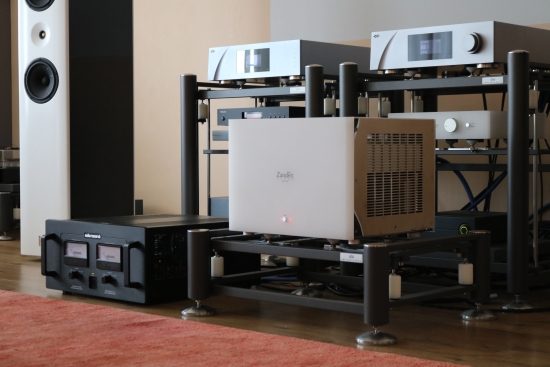
ARC Ref75 and Zanden 8120 optimized
Allowing for component-specific optimization, the two amps remain different beasts but can be brought closer to each other. In this optimized comparison, the Zanden on the Aire platform sounds big, sonorous and very powerful with very solid bass and just the right amount of openness. Just shy of the CH-kind of articulation and transparency, the 8120 is upbeat, sonorous, revealing and very dynamic, without ever tipping over into brightness. Even on the floor, the Ref75 SE is still considerably less solid and propulsive in the bass but it is very articulate, even more so than the Zanden. Its midrange is clearer and its treble brighter, with a touch more air on top. With sensitive enough speakers as a prerequisite, this difference in presentation can swing opinions either way.
Audio buddy JW prefers his ARC for what he identifies as a more “lyrical” presentation, which is the result of his living with Ribbon speakers for half his life and also ties in with his “Overtone/Obertone” preference. Other people, myself included, prefer the Zanden for its more rhythmically assured and more sonorous delivery, tying in with my “fundamental/Grundton” preference. Because of things like these, matters can become very complicated when discussing which amp sounds more natural or more realistic. For example, JW finds the ARC to be more realistic because it sounds more open on top and he doesn’t mind the extra brightness but I find the Zanden to be more realistic because its upper bass is more articulate and better-textured and more natural precisely because it does not lay anything on top. I could go on and on but I think I’ve made my point: “natural” and “realistic” are relative terms.
In terms of timbre, resolution, and refinement I feel that the two amps are performing more or less equally well. Rhythms, percussion instruments, and piano almost always sounded best with the Zanden, vocals are great on both amps and certain sensitive and soulful arrangements (when they do not rely on bass solidity or heavy rhythms) could sound purer, with a more SET-like directness with the ARC.
Even though I quite like the Ref75 SE and it offers great value for money, it has a certain brightness and could do with a little bit more warmth. The Zanden, by contrast, works perfectly in every combination that I have heard it, sounding rich and full-bodied yet adding no obvious character of its own, controlling every speaker very well yet never sounding overly controlled.
Tube types
The interesting thing is that the ARC uses KT150’s while the Zanden uses KT120’s. One would assume that the latter should sound more powerful but as has I experienced before, the power supply, output transformers and the circuit itself usually add much more to the mix than the tubes themselves. The Ref75 SE uses comparatively small output transformers which the makers claim are more refined than bulkier samples. The Zanden, however, seems to prove this a relative matter. Whether it is a matter of power supply and output transformers or decisions made in the circuitry, the KT150’s inside the Ref75 SE do not sound as bold and sonorous as I’ve heard them in other designs, for example, the Line Magnetic LM-150IA. Meanwhile, the Zanden with its KT120’s sounds more solid than any other Push-Pull tube amp that I have used, even including the 16-tube ARC VT200.
It should also be noted that the Carmens are very easy to drive, which created the ideal situation, especially for the ARC. Looking at the Ref75 SE’s meters, they moved very little even when playing very loudly with the Carmens. Compare that to the same amp used with Apogee Duetta Signatures, where the meters are normally halfway and on 75% when playing loudly. It’s that the Duettas are no longer in my possession, otherwise it would have been interesting to see how the Zanden performed with them. Somehow, I’m confident that it would have driven them fantastically, in spite of having KT120’s rather than KT150’s.
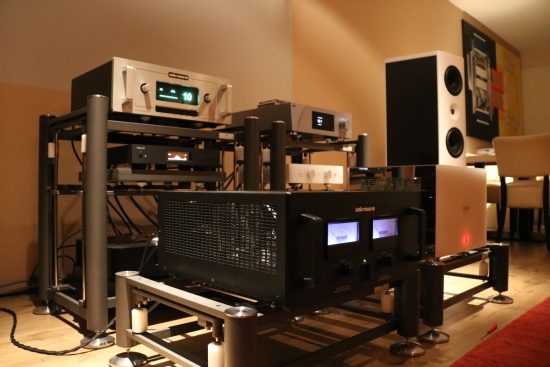
Zanden 3100 and ARC Ref5 preamps
Near the end of the review, audio buddy Big Niels came along and out of his sleeve, he pulled an Audio Research Ref5 preamp, meaning that the Zanden 3100 could be assessed in this system after all. This was the ideal situation because we now had two complete same-brand pre-power amp pairs to compare. First, we used the four components as intended by the manufacturers: Zanden 3100 with 8120 and ARC Ref5 with Ref75SE and then we went all-out and cross-combined the four components.
Mixing and Matching
I know that there is a school of thought that says that a given power amp sounds best with its intended preamp companion. While I would agree that a same-brand pre-power combination is likely to provide most of the delivery that the manufacturer intended, I don’t feel that this needs to necessarily provide the “best” sound in all circumstances. I have been in situations where this theory was indeed confirmed but easily as many times, a more pleasing combination could be found by mixing and matching. After all, all system are different and no two persons want precisely the same. For this reason, I always encourage anyone to experiment with everything and not blindly accept a prescribed combination as being best.
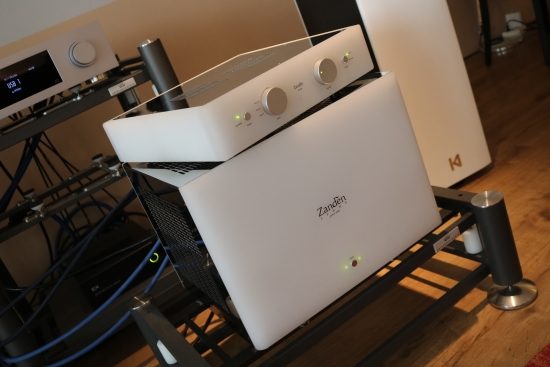
Zanden 3100 and Zanden 8120
Although I found the 8120 amp to sound most impressive when driven directly from the C1, it still sounded great when the Zanden 3100 was inserted into the chain and the C1 set to DAC mode, disabling its volume control. Although softer around the edges, less transparent and pure and less immediate than with no preamp, the sound was not at all colored and still very natural and definitely engaging. The delivery was still quite powerful and while still essentially neutral, now richer and smoother than without a preamp. Clearly, there is good synergy between the two Zandens. Audio buddy JW preferred the sound with the preamp in place, stating that the sound directly from the C1 was too direct and upfront for him. This makes sense because he has always used a preamp and has always tuned his system to sound quite relaxed, while I have for the past few years been verging ever more toward a more neutral and more powerful delivery. Needless to say, while I appreciated the 3100 addition, I preferred it when the 8120 was driven directly.
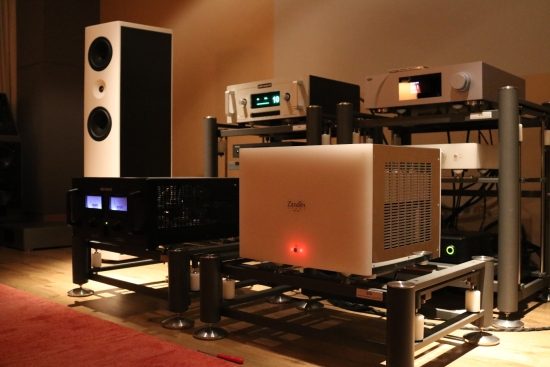
Ref5 and Ref75 SE
Changing from the Zanden combination to the ARC Ref75 SE and Ref5 combination, the difference between the two setups proved larger than when comparing only the power amps, and different, as well. While the Ref5 lent more bass weight to the Ref75 SE and added a more romantic touch with a super-liquid midrange and a lush richness yet no apparent coloration, the sound was also less transparent and dynamic than the Zanden combo or when the Ref75 SE was driven by the C1 directly. While JW was fond of the midrange lushness and overall liquidity and this was indeed quite appealing, I could not get over the reduction in bass precision and overall articulation. If I had to choose between these two pairings, I’d go for the Zanden combo in a heartbeat.
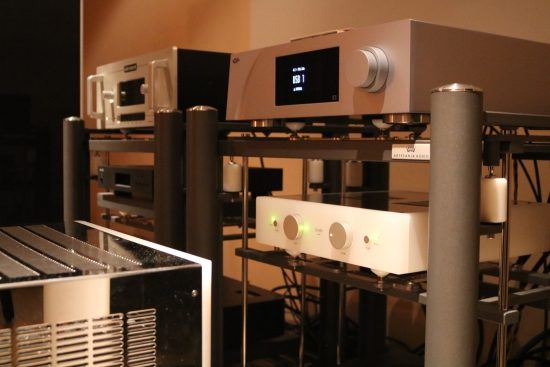
This is how the Zanden 3100 was used: on the Artesania Exoteryc rack, using the rack’s integral feet.
Ref5 and Zanden 8120
On its own, the 8120 is technically immaculate as well as emotionally superbly convincing and I feel that it sounds spectacular when driven directly by the CH Precision C1. Some of my visitors, however, themselves used to listening with a dedicated preamp, found the sound without an actual preamp sometimes a little bit too direct. One of these persons is JW. He prefers music to be a little bit more romantic and so he favors the richer sounding pre-power pairings, particularly the ARC one. Although the Ref5 preamp sounded luscious and rich when paired with its natural partner power amp, the sound was considerably less articulate and much more relaxed than I liked. JW also agreed with me that the bass precision and PRaT were reduced in the process but he didn’t really mind that because the midrange liquidity was more important to him.
But when we paired the ARC Ref5 with the Zanden 8120, this turned out to provide the absolute best balance between technical precision and emotional involvement. Now there was all the power, speed, control, dynamics, and transparency to satisfy me as well as the richly saturated textures, everlasting decays and utterly lyrical, emotional delivery to make JW happy. With this setup, we listened to track after track, astonished at the level of performance until I had to call it quits because it was a weekday and I had to get some sleep before work. While the Zanden pairing definitely sounded very good, we all felt that the unlikely combination of these two brands provided the best of all worlds. What can I say? The audio hobby remains full or surprises.
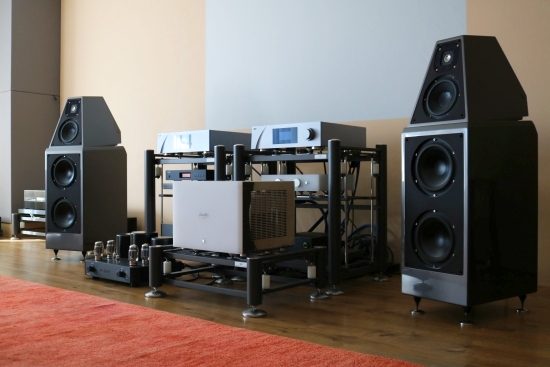
Wilson Watt/Puppy system 8
After the Carmens were picked up, Ben and Peter were happy to let me keep the Zanden amps for a while, which allowed me to test the 8120 with the Wilsons as well. Like the Carmens, the Wilsons are quite sensitive but they are also notorious for having a low impedance through the midbass which can make some amps run out of steam at louder levels. Well, not with the Zanden 8120. I never felt like I was missing power or dynamics, not even in cinema mode when watching loud action movies. The Wilsons are very highly resolving and quite critical in that they will reveal any issues upstream, no matter how small. If there is even a trace of hardness in the source or amps, the Wilsons will let you hear this. With the Zanden 8120 there is all the resolution that you could possibly ask for but never ever any hardness. Also, all the aforementioned Zanden’s musical aspects were present as clearly as they were with the Carmens. With the Wilsons, just as much, the 8120 has that rare combination of technical excellence and conveyance of emotion.
Conclusion
Like the power amp, the Zanden 3100 does not sound euphorious and has no perceptible coloration. It sounds highly refined, very pure and natural and quite neutral with a very spacious, room-filling soundstage with well-defined images within. The 3100 is the natural partner for the 8120 and indeed combines very well with it. Although it sounds very pure and has no coloration, in my experiments, this preamp added a certain sweet quality and made the 8120 sound less forceful. While the combination sounded transparent and seamless and was certainly seductive, it did not allow the music to rock out as much as I would like it to.
For me, the Zanden 8120 really is the star of the show. It combines the best of transistors and tubes and avoids all of the typical flaws of either of these designs. This is a tube amp that does not sound like a typical tube amp because it has none of the usual detractive tube side effects which, for some people actually define “tube sound”. It is extremely linear in its behavior, very articulate, upbeat and very dynamic. The 8120 has a mild warmth and sweetness yet it is very transparent and lets you hear deep into the mix. It has exemplary bass control and dynamics as well as a more emotional delivery than probably any transistor amp. This is not due to coloration or added thickness but by better fleshing out the sounds and projecting them more freely in a soundstage that is not only more room-filling but also better layered and more 3D and therefore, more involving. What’s more: the 8120 worked synergistically in all the combinations that I tried it in, meaning that it seems to be a highly universally applicable amp. Needless to say, this is now one of my favorite amps.
Read Also
External Links
Manufacturer: Zanden
Available from: Chattelin Audio Systems
Distributor for the Netherlands: Harmony Audio Import
